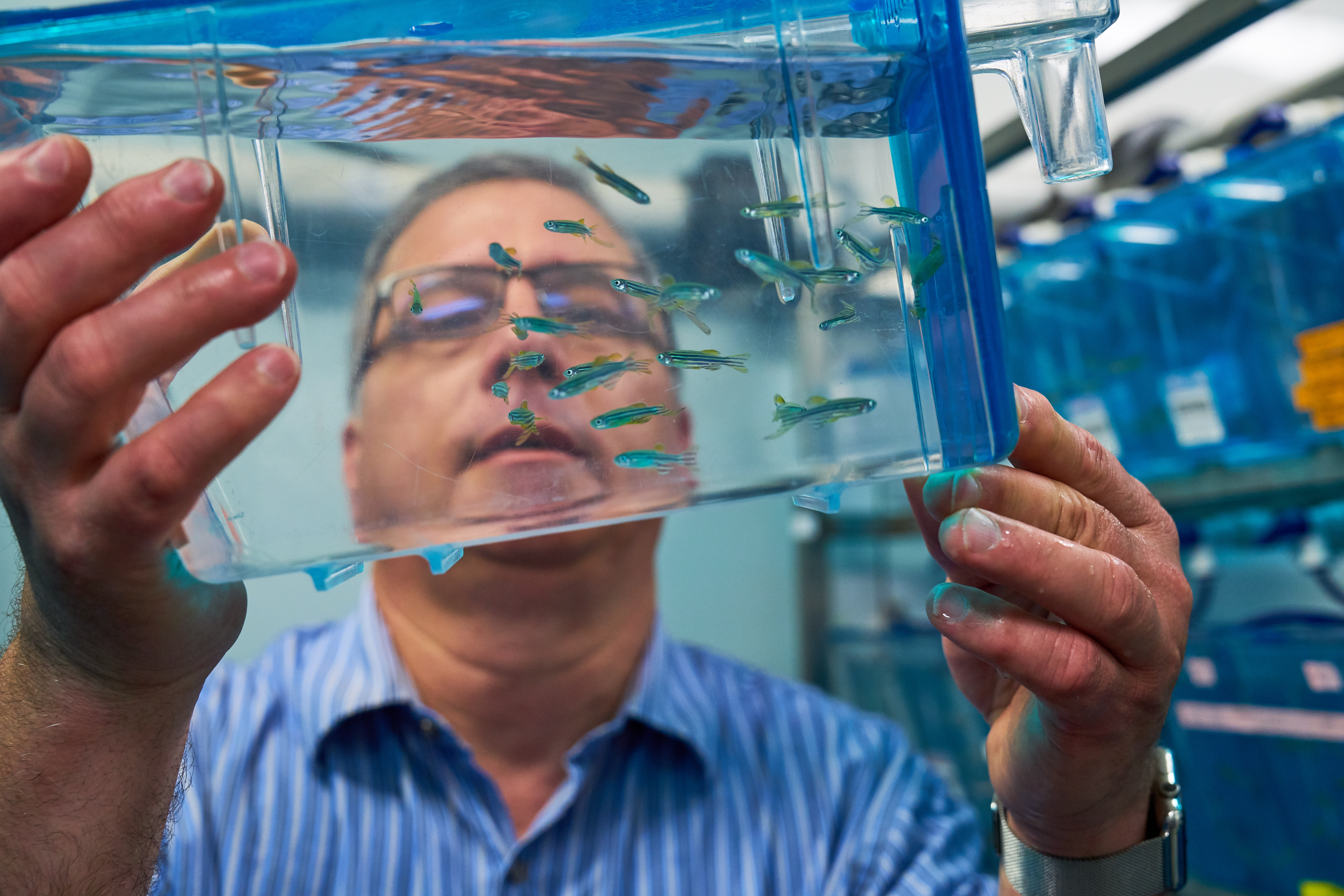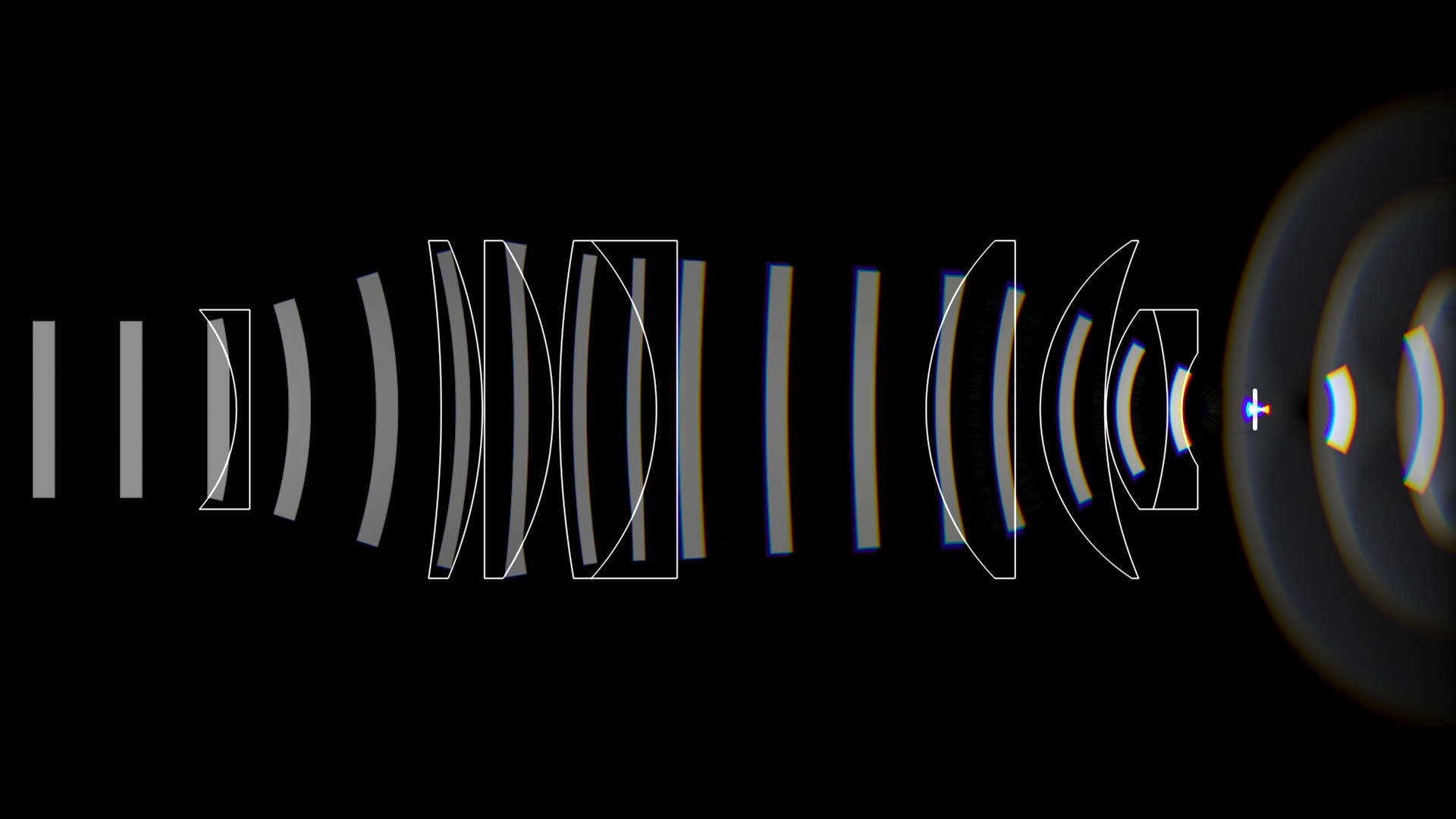What Is NeuroNex?
When it comes to studying the complex workings of the brain, questions
abound.
For instance, how does the brain interact with its environment? How does behavior and cognition emerge from
the brain’s structural organization and dynamic activities? How do brains maintain their functionality over
time?

Cornell researcher Joseph Fetcho examines fish as part of an effort to develop noninvasive
recordings of neural activities.
University researchers hope the innovative technology will be used to study numerous other species
including mammals, birds, and flies.
CREDIT / Cornell University
Now, as part of the
National Science
Foundation’s Next Generation Network for Neuroscience Program, 21 multidisciplinary teams across
the U.S. are developing tools and resources as well as computational modeling to advance neural and
cognitive research.
“NeuroNex is aimed at enabling researchers by providing
access to these tools/resources and providing conceptual foundations so they can ask these questions in
a variety of species as appropriate.”
Sridhar Raghavachari
NeuroNex Program Director
NeuroNex is part of the
BRAIN Initiative, a public-private
partnership implemented in 2013. NSF’s participation in the BRAIN Initiative is one element of the agency’s
ambitious activity,
Understanding the Brain,
which seeks to “enable scientific understanding of the full complexity of the brain in action and in
context.”

Researchers at the University of North Carolina, Chapel Hill are creating new technology to measure the
brain’s neural activity through multiphoton imaging.
CREDIT / Spencer L. Smith Lab
“Through the development of advanced instrumentation to observe and model the brain, we're closer to our
goal of building a more complete knowledge base about how neural activity produces behavior,” said Jim Olds,
former NSF Assistant Director, Biological Sciences. “NeuroNex seeks to take that progress forward, by
creating an ecosystem of new tools, resources, and theories. Most importantly, NeuroNex aims to ensure their
broad dissemination to the neuroscience community. With these awards, NSF is building a foundation for the
next generation of research into the brain.”
The NeuroNex Awards support collaborations between technology developers, theoreticians, and experimentalists toward the development of a research infrastructure that will benefit neuroscientists around the world. This research infrastructure will, in turn, help advance our understanding of the myriad levels of the brain across multiple species.
Of the 21 awards, research focus ranges from developing, refining, and disseminating new and innovative technologies to developing “early-stage” tools that can potentially be integrated with other NeuroNex projects.
The NeuroNex Awards support collaborations between technology developers, theoreticians, and experimentalists toward the development of a research infrastructure that will benefit neuroscientists around the world. This research infrastructure will, in turn, help advance our understanding of the myriad levels of the brain across multiple species.
Of the 21 awards, research focus ranges from developing, refining, and disseminating new and innovative technologies to developing “early-stage” tools that can potentially be integrated with other NeuroNex projects.
